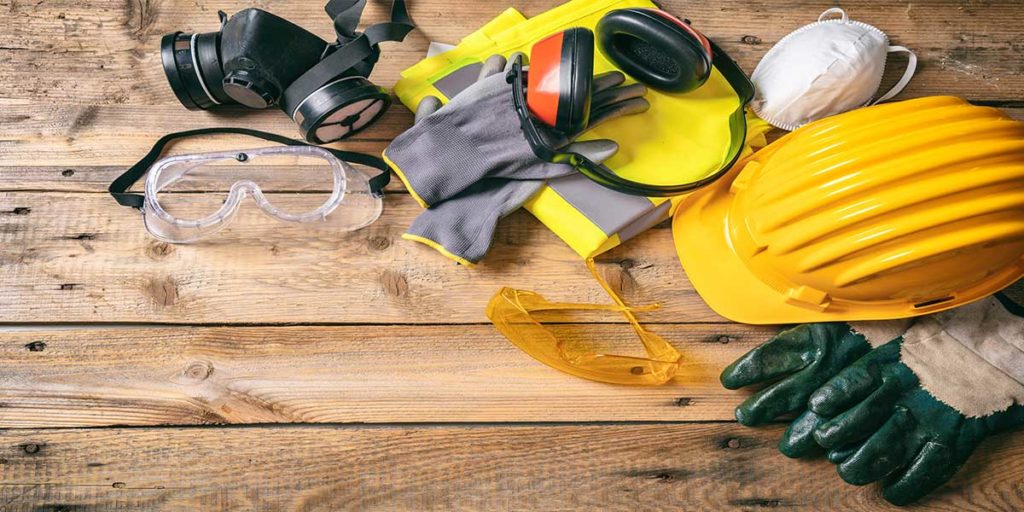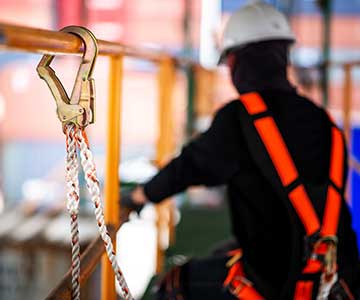Personal Protective Equipment (PPE)
Posted: Jun. 1, 2019 • By Kevin Kohler

PPE just makes us look professional on the job right?
No, PPE serves an important purpose as a last line of defense for protecting workers on the job. Consider the following from the Alberta Association of Optometrists:
“According to the Canadian National Institute for the Blind, over 700 Canadian workers per day sustain eye injuries on the job, resulting in lost time and/or temporary or permanent vision loss … However, this statistic isn’t the worst. The worst statistic of all is that 90 percent are preventable by the use of proper safety equipment, including safety eyewear.”
Wearing the proper PPE such as safety eyewear, designed for the hazards you will be facing, can be a very effective health and safety measure.
What is PPE?

PPE is equipment that is worn by a worker as a last line of defense to protect their health and safety when other hazard controls are ineffective or insufficient.
Some common examples of PPE include:
- Protective headwear (hardhats);
- Protective hand wear (gloves, arm shields);
- Protective footwear (steel toed boots);
- Protective clothing (chemical suits, flame resistant clothing);
- Protective eyewear (glasses, goggles, face shields);
- Hearing protection (ear plugs, muffs);
- Respiratory protection (respirators, dust masks).
What is the hierarchy of controls and why is PPE at the bottom?
The key to PPE selection and use, is understanding that it is meant to be a last line of defense:
- In case other more effective hazard controls fail
- To provide additional protection along with other hazard controls
- When no other reasonable hazard controls will work
If we think about it, it seems reasonable that PPE should not normally be the only hazard control we decide to use. For example, if you were told to wear a hardhat because nuts and bolts fall from working levels above you, you would rightfully ask yourself if that’s really the only, way to protect workers from this hazard? Most reasonable people would want to go to the source of the problem and eliminate it, or barring that enact some administrative rules around using loose items at heights or even engineer some netting above your work area. You might still require hard hats to be worn as an additional hazard control, in case all else fails, or to provide general level of protection.
This is exactly how the hierarchy of controls works. NIOSH the US National Institute for Occupational Safety and Health represents the hierarchy of controls from most to least effective in the following manner:

PPE is a critical piece of safety equipment; however if that’s all we are counting on, then we are accepting that workers will be put in harms way with only their PPE to protect them.
How can we use PPE effectively?
To be used effectively PPE must be carefully selected, fitted, used, inspected and maintained. Workers must be carefully trained in the use, care and limitations of the PPE that they are required to wear.
Hazard and risk assessments must be performed to determine the PPE that will be used. Selection of the most appropriate PPE may require expert assistance to ensure that its technical specifications meet our requirements.
It always makes sense to involve workers in selecting PPE because they are the ones who must wear and care for it. Comfortable, long lasting and effective PPE is much more likely to be worn.
And we must never forget not to use our PPE in lieu of other more effective hazard controls, but in addition to them.
Related Articles

Safety Audits
Safety audit reports in the media always seem to be negative It’s often bad news when we read and hear […]
Read Article
Defensive Driving
We often drive for work, it’s not a “big deal” Unfortunately, driving for work is a very big deal from […]
Read Article